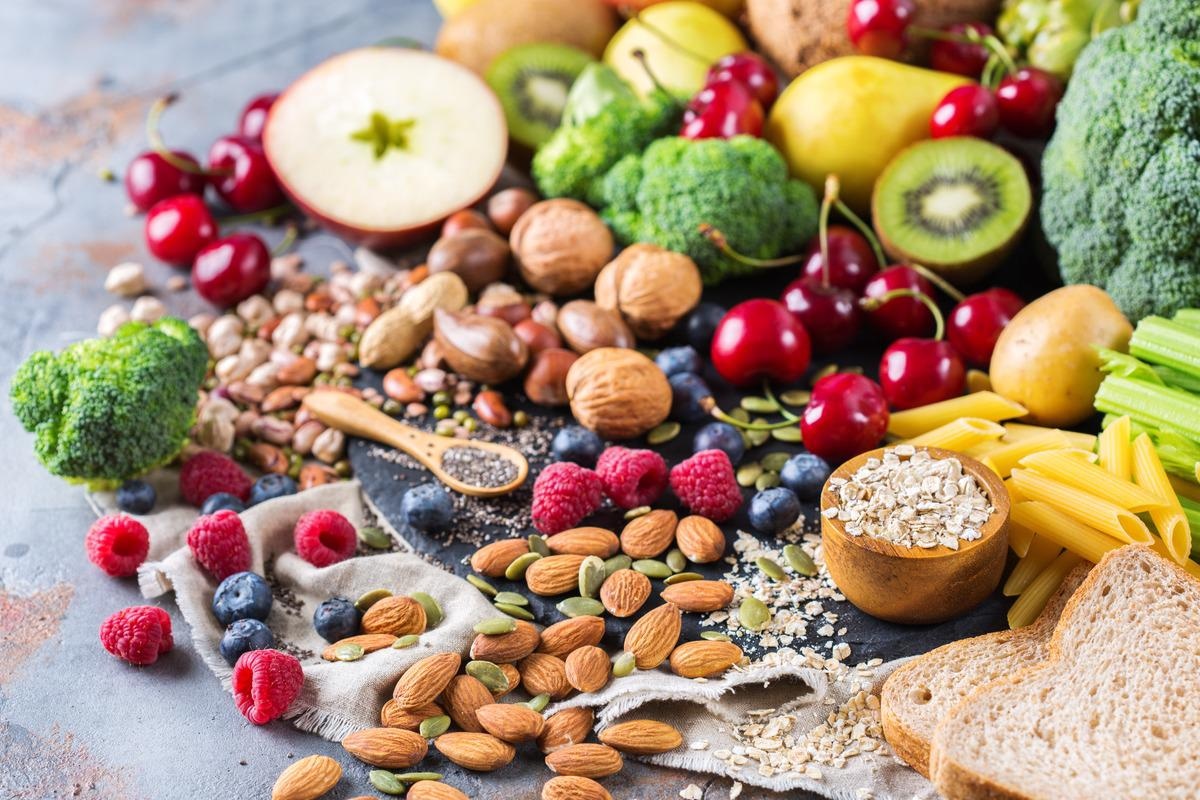Higher cereal fiber intake associated with lower inflammation

Low-grade systemic inflammation is associated with an increased risk of various diseases including cardiovascular disease (CVD) and cancer. However, modifiable factors that are capable of reducing inflammation can help to modulate disease risk. For example, a higher dietary intake of fiber is associated with lower systemic inflammation in healthy adults as well as adults with certain health conditions.
Study: Intake and Sources of Dietary Fiber, Inflammation, and Cardiovascular Disease in Older US Adults. Image Credit: Antonina Vlasova / Shutterstock.com
Background
Data on the association between fiber and inflammation for older adults with higher levels of inflammation are limited. Furthermore, there also remains a lack of information on whether the source of fiber affects inflammation differently in a healthy population.
To date, most studies on inflammation and dietary fiber have been focused on circulating concentrations of C-reactive protein (CRP), which is an acute-phase protein, along with inflammatory cytokines such as interleukin 6 (IL-6) and tumor necrosis factor α (TNFα). Therefore, further investigation on the association between dietary fiber and systemic inflammation is required for the selection of interventions that would target specific aspects of inflammation.
The knowledge regarding the association between dietary fiber and inflammation is important for CVD, as higher intakes of dietary fiber have been associated with a lower risk of CVD. A common explanation for this association is that higher dietary fiber lowers inflammation which, in turn, lowers the risk of CVD. However, knowledge regarding whether and to what extent dietary fiber reduces inflammation and CVD risk is lacking.
A new JAMA Network Open study assesses the association between total and source-specific dietary fiber intakes with markers of inflammasome activation, acute-phase inflammation (CRP), and inflammatory cytokines along with incident CVD.
About the study
The current study included 4,125 participants from Cardiovascular Health Study (CHS) in the United States who were aged 65 years or above and enrolled from 1989 to 1990. The participants were asked to complete a food frequency questionnaire that helped to estimate their total fiber intake, total energy, and source of fiber intake.
Blood samples were collected from the participants to measure different circulating markers. All participants were followed-up through alternating in-person visits and telephone calls from baseline through 1999. After 1999, participants were followed-up with by telephone until June 2015.
Study findings
Out of the 4,125 participants, 95% were White, 4.4% were Black, 0.3% were Native American, 0.1% were Asian or Pacific Islander, and 0.2% were classified as other ethnicities. Out of the total study population, 40% were men and 60% were women, with a mean age of 72.6 years.
The mean energy-adjusted total fiber intake was 16.3 grams per day (g/d), with a mean cereal fiber intake of 4.2 g/d, fruit fiber intake of 5.2 g/d, and vegetable fiber intake of 6.9 g/d.
The individuals with the lowest intake of total fibers were most likely to be Black, men, have less than high school education, drink more alcohol, are current or former smokers, and engage in less physical activity. These individuals were also found to have a lower intake of vegetables.
An increase in total fiber intake of 5 g/d was associated with lower concentrations of CRP and IL-1 receptor antagonists (IL-1RA). However, an increase in total fiber intake of 5 g/d was associated with higher concentrations of soluble CD163 (sCD163), which plays a role in macrophage or monocyte activation.
An increase in cereal fiber intake by 5 g/d was also associated with lower concentrations of CRP, IL-1RA, and IL-6, while an increase in fruit fiber intake was associated with higher concentrations of sCD163. However, an increase in vegetable fiber intake was not associated with any markers.
Additionally, an increase in total fiber and cereal fiber intake by 5 g/d was associated with a lower risk of CVD. The CVD subtype estimated by the hazard ratio was similar to stroke for cereal fiber but not myocardial infarction and atherosclerotic coronary heart disease death. The results also indicated that the effect of cereal fiber on CVD was not mediated by inflammatory markers for the majority of the markers.
Conclusions
The current study suggests that a higher intake of cereal fiber can be associated with lower levels of inflammation in older individuals. However, inflammation was found to have a modest role in the mediation of the inverse association between CVD and cereal fiber. Thus, factors other than inflammation might have a bigger role in the cereal fiber-associated reduction in CVD, which needs to be assessed further.
Limitations
The current study did not include certain information on additional immune markers. additional limitations were that the study comprised measurement error and there was a limited ability to generalize the findings, as it was conducted with only older adults.
- Shivakoti, R., Biggs, M. L., Djousse, L., et al. (2022). Intake and Sources of Dietary Fiber, Inflammation, and Cardiovascular Disease in Older US Adults. JAMA Network Open. doi:10.1001/jamanetworkopen.2022.5012.
Posted in: Men's Health News | Medical Research News | Medical Condition News | Women's Health News
Tags: Alcohol, Blood, Cancer, Cardiovascular Disease, Coronary Heart Disease, C-Reactive Protein, Cytokines, Diet, Education, Food, Frequency, Fruit, Heart, Heart Disease, Inflammasome, Inflammation, Interleukin, Macrophage, Monocyte, Myocardial Infarction, Necrosis, Physical Activity, Protein, Receptor, Stroke, TNFα, Tumor, Tumor Necrosis Factor, Vegetables

Written by
Suchandrima Bhowmik
Suchandrima has a Bachelor of Science (B.Sc.) degree in Microbiology and a Master of Science (M.Sc.) degree in Microbiology from the University of Calcutta, India. The study of health and diseases was always very important to her. In addition to Microbiology, she also gained extensive knowledge in Biochemistry, Immunology, Medical Microbiology, Metabolism, and Biotechnology as part of her master's degree.
Source: Read Full Article
